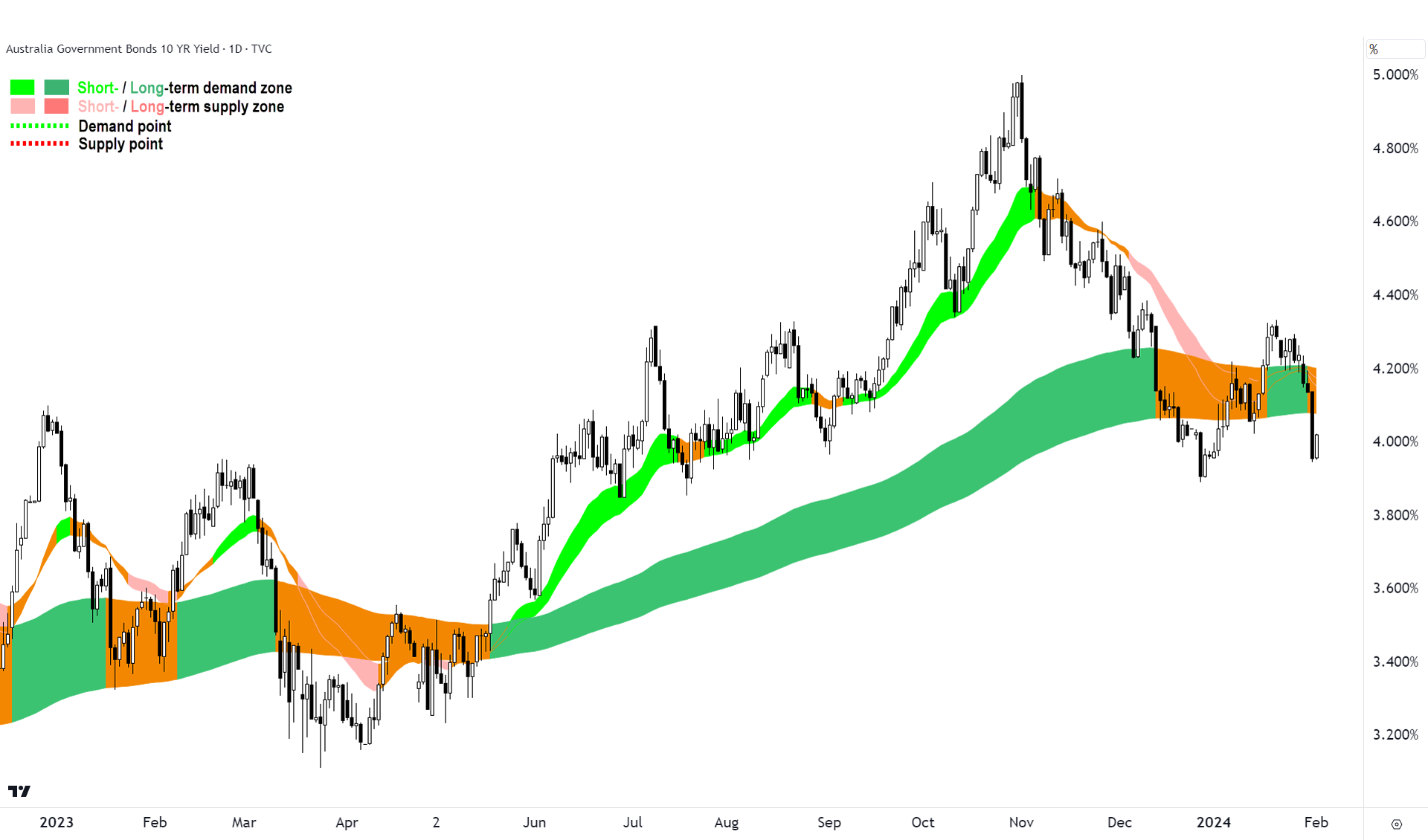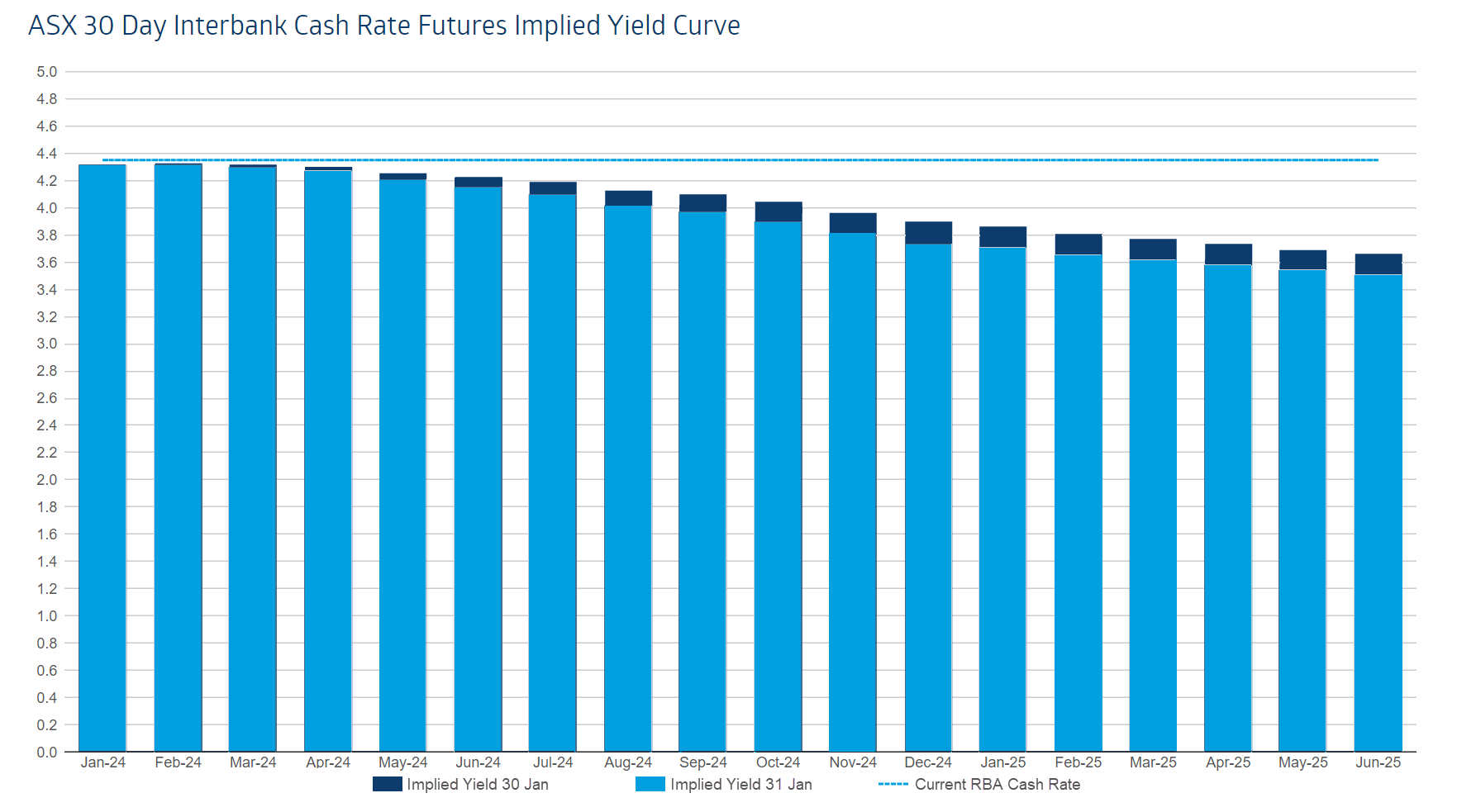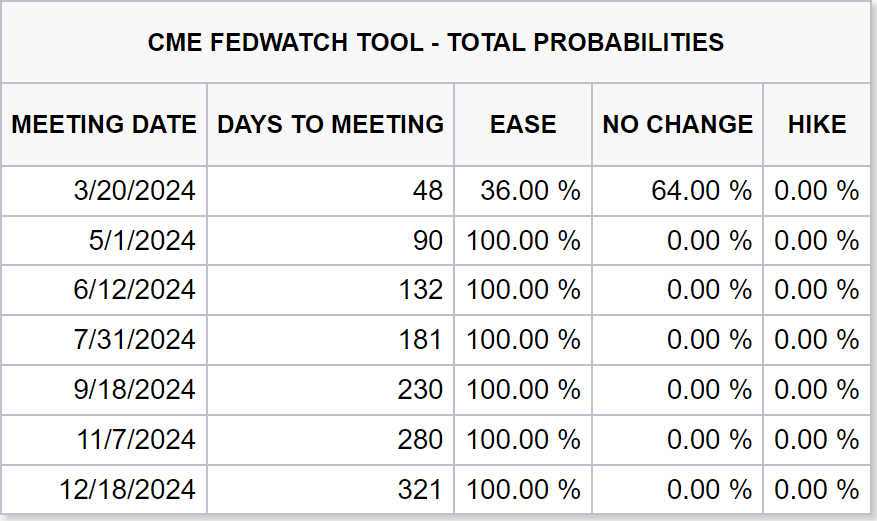Is it time to fix that term deposit rate? What to expect from the RBA and interest rates in 2024
The December quarter Consumer Price Index (CPI) is in, and it suggests Australian inflation continues to moderate. The trimmed mean CPI, the RBA’s preferred measure of inflation in the economy, increased 0.8% in the three months to the end of December, for an annual increase of 4.2%. This is still well above the RBA’s target for inflation to average 2-3% in the medium term.
The spike in inflation, to nearly 8% p.a. at the end of 2022, is the main reason the RBA has increased its cash rate at a record pace and scale since the post-pandemic lows. It now sits at 4.35% and is a key benchmark rate for borrowers and depositors alike. This makes the cash rate a crucial input factor for investors in stocks, fixed interest, and most other asset classes.
Let’s take a look at how the big brokers responded to the latest CPI data, and what scenario the market is now pricing for the cash rate for the rest of the year. If you own stocks, or you’re thinking about parking some money in a fixed-rate term deposit to take advantage of the current juicy yields, this is the article for you!
Brokers on December Quarter CPI:
Citi – Rates have peaked
“With the CPI moderating more quickly than expected, we close the door on our view that the peak of the cash rate cycle would be 4.60%. Instead, our modal view is now 4.35%”
“sticky services inflation, pending income tax cuts and rising house prices argue against a February turn in guidance from the RBA Board”
“We continue to expect 50bps worth of cuts this year, with 25bps in Q3 and Q4 for 3.85% by the end of the year.”
Morgan Stanley – No cuts in 2024
“inflation path is likely to be revised down at their [RBA’s] February meeting next week”
“there still looks to be some stickiness in CPI categories the RBA has flagged previously (services, non-tradables)”
“We expect that the RBA will be on hold through 2024, and start easing in February 2025.”
UBS – First cut in August
“Headline CPI…notably below our forecast & consensus...and well below the RBA forecast”
“UBS now sees first cut in Aug”
It’s a bit of a mixed bag, with brokers generally noting the lower than expected CPI print has effectively ruled out the possibility of further rate hikes from the RBA. The main point of contention is the timing of the first cut, and the magnitude of potential cuts in 2024. On this point, there appears to be a wide spread of views ranging from no cuts in 2024 to two 0.25% cuts potentially starting as early as August.
How the market responded
Whilst we know stocks love lower interest rates, the bond market tends to be the most sensitive market to changes in interest rate expectations. Because bonds are fixed interest assets, expectations of higher interest rates make newly issued bonds sporting higher rates more attractive to investors. This means the prices of existing bonds must be marked down to compensate investors accordingly.
The converse is true, and it’s what happened yesterday, but really, it’s also what’s been happening for many months now. Expectations have been growing since around October rates have peaked and are most likely on their way down in 2024. This means that new bonds are likely to have lower yields than existing bonds, therefore making existing bonds more attractive to own. So, bond prices usually rise in an environment of lower rate expectations.

One final brain bender on bonds (but hey – this is important stuff if you want to understand how markets work!). There’s an inverse relationship between bond prices and bond yields. This is why in the chart above of the Australian 10-year Government Bond yields, the trends, price action and candles all point to a general decline (note yesterday’s big drop after the CPI data!) Yields are coming down, which means bond prices must be going up.
The 10-year bond is a benchmark for market rates, that is, the rates that big corporations and lowly investors like us pay on our loans and on our term deposits. It’s a vital market factor which all investors should keep an eye on. Since October the trend has generally been down, with yields falling from around 5% to 4%. This reflects the market’s views on where the RBA cash rate is headed. Not long ago we all assumed it would be soaring towards 5%, but now we think it could be closer to 4% in the near future.
Remember, lower bond yields are typically good for stocks, and the chart above is the main reason why your stock portfolio has done so well since October. There’s so much noise surrounding why stock prices do anything, but yesterday’s record high on the S&P/ASX200 was largely due to the abovementioned fall in bond yields. If this article does anything, hopefully it alerts you to the importance of watching the bond market!
But lower bond yields are bad for those looking for fixed income returns via cash and term deposits. This is because companies can borrow from one another at cheaper rates, so naturally they don’t need to keep paying you high rates on your cash and deposits. I know from personal experience, at-call cash rates at some financial institutions are over 4.5%, and a quick Google search suggests term deposit rates are up to 5.25%.

The data suggests there’s a growing consensus in the market that rates have peaked, and that we are likely to see lower rates in the near future. The implied yield of 30-day interbank cash rate futures is widely accepted as providing the best insight into what the market thinks about the future path of the RBA’s cash rate.
The dark blue bars show what the market was thinking before yesterday’s CPI data, and the light blue bars after. Expectations for where the RBA’s cash rate is going to be through to the middle of next year have declined across the board. The market now expects 0.25% of cuts (i.e., the typical RBA rate change increment/decrement) by August, compared to September before the CPI data. It now expects the cash rate to by 3.735% by the end of the year, i.e., around 0.62% lower than current.
Tangent – What’s the Fed up to?
Just a super quick tangent here because the timing of our CPI data nicely coincided with a US Federal Reserve meeting last night. As widely expected, the Fed decided to keep its official rate on hold at 5.25%-5.50%, but importantly, it dropped any reference to a further tightening bias. This has caused the market to now completely factor out the possibility of future hikes from the Fed.
In his post-meeting press conference, Fed Chairman Jerome Powell confirmed they’re open to the prospects of rate cuts in the future (how long is the future!), but firmly pushed back on the likelihood the Fed would start cutting at their next meeting in March. Market pricing has adjusted accordingly, but the ever-optimistic investors in America are now calling a May cut a 100% certainty!

This article first appeared on Market Index on 1 February 2024.
5 topics

